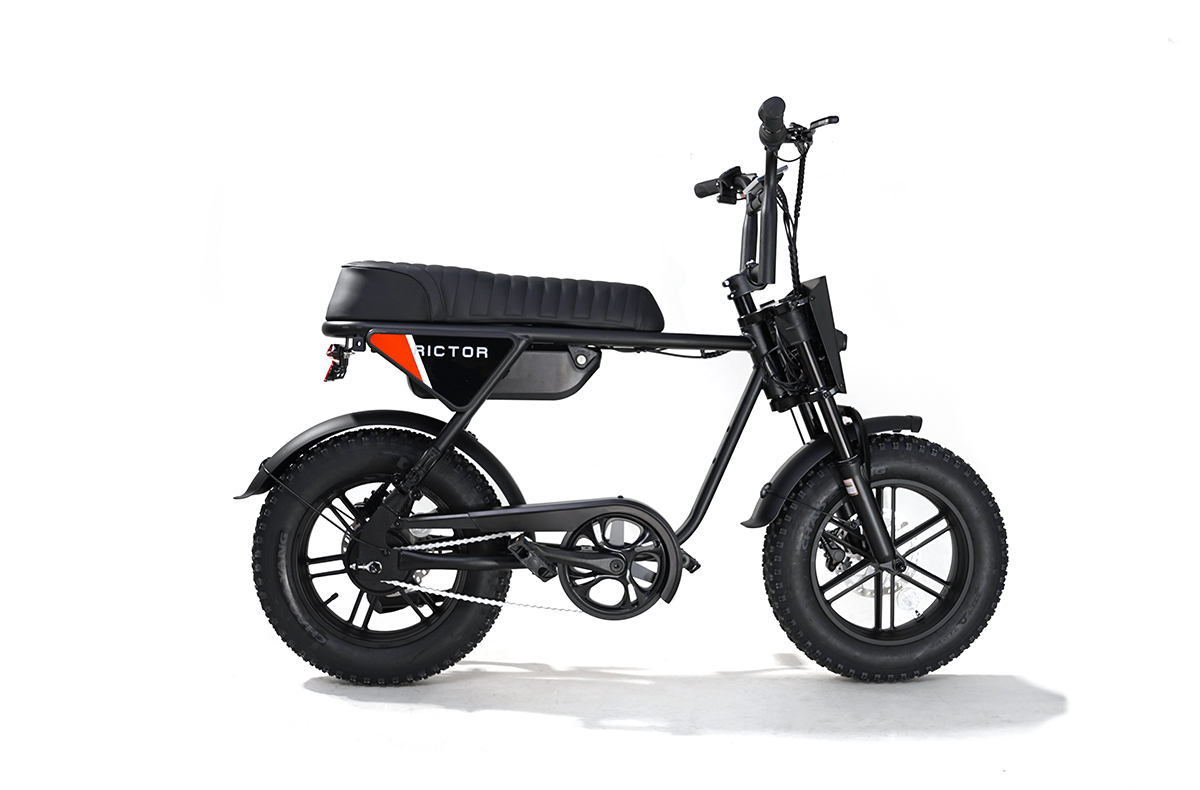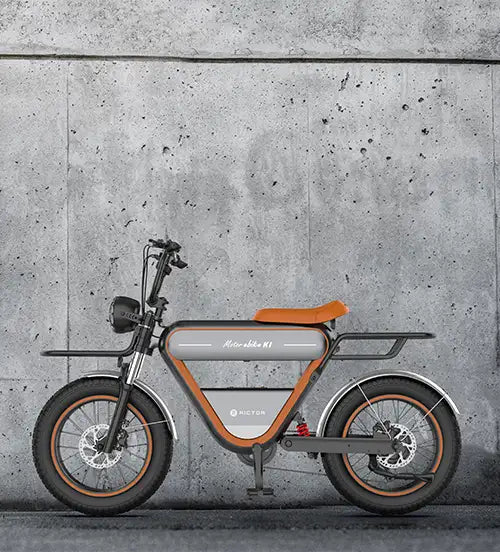
Chains vs. Belt-Drives for E-Bikes: Which One is Right for You?
Chains and belt drives for electric bikes both are designed to transfer power from the pedals to the wheels, but they do so in different ways. While chain drives are the traditional option, belt drives have gained popularity in recent years for their smooth operation and low-maintenance appeal.
This article will explain the key differences between the two, helping you determine which system best suits your needs.
What is a Chain Drive
The chain drive is the most common drivetrain used in both traditional and electric bikes. It consists of a metal chain that connects the pedals to the rear wheel, transferring power as you ride. Chains work by fitting into the teeth of chainrings and cogs, and in multi speed bikes, the chain shifts between gears via a derailleur. Rictor K1 750W electric bike utilizes this chain system for precise power transfer, ensuring a smooth and efficient ride.
They provide precise shifting, which is why they are preferred by competitive cyclists. With proper maintenance, chain systems can perform efficiently on various terrains, allowing for smooth transitions between gears.
Chains require regular attention. They need frequent cleaning and lubrication to prevent rust, dirt buildup, and wear. Over time, chains can stretch, leading to less efficient power transfer and uneven gear wear. Additionally, chains can be messy, collecting grime that can stain clothing and require constant cleaning.
SEE ALSO How Fast Can a 750W Electric Bike Go?
What is a Belt Drive
Belt drives, in contrast, use a carbon fiber-reinforced belt to transfer power from the pedals to the rear wheel. Unlike chains, belt drives do not require lubrication and are enclosed, which reduces the buildup of dirt and grime. The system operates through a set of pulleys that move the belt, delivering power in a quieter and smoother manner.
Belt drives are highly valued for their low maintenance characteristics. They don’t require frequent cleaning, and the lack of lubrication reduces the mess associated with traditional chain systems. Additionally, belts tend to last longer than chains because they don’t stretch or rust, making them an excellent option for riders who prefer a quieter and more durable system.
However, belt drives are generally more expensive than chain systems. They also offer fewer gear options, which may not suit riders who need a wide range of gearing for varied terrain. Lastly, not all bikes are compatible with belt drives, which may require significant modifications if the frame is not designed for this type of system.
Belt Drive vs. Chain Drive: Pros and Cons
Chain Drive Pros:
Versatility: Chain systems offer a broad range of gears, making them suitable for different riding styles and terrains.
Performance: They deliver efficient power transfer, making them ideal for riders seeking high performance.
Widespread availability: Chain systems are commonly found on many types of bikes, making them easier to find and replace.
Chain Drive Cons:
Maintenance: Chains require regular cleaning, lubrication, and occasional adjustments to maintain optimal performance.
Wear and tear: Over time, chains can stretch, rust, and wear out, affecting their efficiency and requiring replacement.
Mess: Chains can accumulate dirt and grease, which can soil clothes and hands.
Belt Drive Pros:
Low maintenance: Belt drives require minimal upkeep and do not need lubrication, reducing cleaning time and mess.
Quiet operation: The belt system operates much more quietly than chains, offering a smoother, more pleasant ride.
Longer lifespan: Belts do not stretch or rust, providing a more durable option over time.
Belt Drive Cons:
Higher cost: Belt drives are generally more expensive than chain systems, both in terms of initial cost and replacement.
Limited gear options: While they provide smooth power transfer, belt drives typically offer fewer gears, which may limit versatility for some riders.
Compatibility: Not all bikes are designed to accommodate belt drives, so installation can be more challenging on certain models.
Who Should Consider a Belt Drive Bike
Belt-drive e-bikes are ideal for riders who prioritize low-maintenance, quiet operation, and long-term durability. If you’re looking for a bike that requires less upkeep, a belt drive is a great option. These systems are particularly well-suited for commuters or those who prefer a smooth, quiet ride with minimal maintenance.
However, if you are someone who values a wide range of gears and doesn’t mind performing regular maintenance to ensure optimal performance, a chain-drive e-bike may be a better choice. Chain systems offer more flexibility and performance, especially for riders who frequently ride on varied terrains or engage in more intense cycling.
Final Thoughts
Choosing between chain drives and belt drives comes down to your personal preferences and riding needs. Chain systems offer more versatility, performance, and gear options, but they require regular care to maintain their efficiency. Belt systems offer quieter, smoother rides with less maintenance, though they come at a higher upfront cost and offer fewer gear choices.
FAQs
How long do belt drives last compared to chain drives?
Belt drives generally last longer than chains due to their resistance to stretching, rust, and wear. With proper care, belts can remain in good condition for many more miles compared to chains.
Can a belt drive be installed on any e-bike?
Not all e-bikes are compatible with belt drive systems. If your bike is not designed for a belt drive, modifications may be necessary, and compatibility can be an issue.
Are belt drives worth the extra cost?
If you prioritize low-maintenance and a quiet, smooth ride, a belt drive may justify the higher cost. However, for riders who prefer more gear options and don’t mind regular maintenance, a chain system might be a more cost-effective choice.





